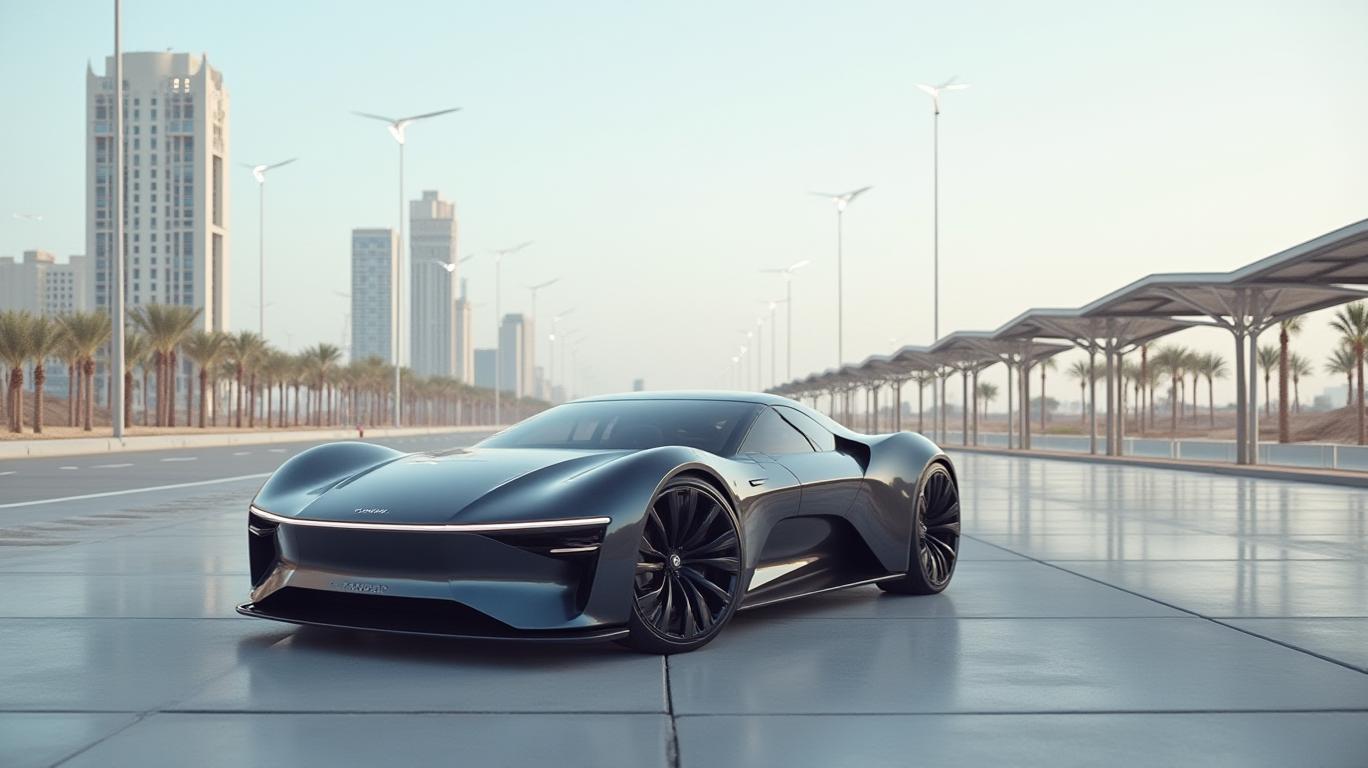Faraday Future’s Middle East Gambit: Can the “Third Pole” Strategy Secure Its Future?
In the ever-evolving race to dominate the electric vehicle (EV) market,
(FF) is staking its claim as a disruptor with audacious ambition. While competitors like Tesla and Rivian have carved out niches in established markets, FF is now betting big on a bold strategy: the “Third Pole” initiative, which aims to transform the Middle East into a global hub for AI-driven mobility. The company’s newly operational facility in Ras Al Khaimah, UAE, is the linchpin of this vision—a move that could either cement FF’s legacy as a visionary pioneer or prove to be a costly misstep.The Strategic Play: Why the Middle East?
The Middle East is no longer just a region for oil; it’s now a battleground for renewable energy and EV adoption. Faraday Future’s decision to establish a foothold here is shrewd. The Gulf Cooperation Council (GCC) countries, led by the UAE, are aggressively pursuing sustainability goals, with Abu Dhabi’s Masdar City and Dubai’s EV charging network serving as testaments to their shift toward green economies.
The Ras Al Khaimah facility, spanning 108,000 square feet and set to create 200 skilled jobs, is positioned to serve as a production and engineering hub for FF’s mass-market Faraday X (FX) line—starting with the FX Super One. This MPV, priced between $20,000 and $50,000, targets a price-performance gap dominated by vehicles like Toyota’s RAV4. But FF isn’t just chasing volume; it’s leveraging its AI integration to offer features like autonomous driving and personalized cabin experiences, which could redefine the segment.

The Global Bridge Strategy: Connecting Markets
FF’s “Third Pole” isn’t just about selling cars in the UAE. The facility’s location in Ras Al Khaimah—a gateway to Europe and North Africa—offers logistical advantages. By aligning its Middle East launch with the U.S. rollout of the FX Super One in June 2025, FF aims to create a “parallel” growth engine. The plan is to use the region as a springboard to tap into Europe’s stringent emissions regulations and North Africa’s emerging EV demand, where traditional automakers have yet to establish a strong presence.
The company’s “Light, Swift, and Empowering” model—targeting R&D costs below 25% of legacy automakers—gives it a cost advantage. This efficiency is critical for competing in price-sensitive markets. Meanwhile, its partnership with Ras Al Khaimah Economic Zone (RAKEZ), which streamlined permitting and regulatory hurdles, underscores the UAE’s eagerness to host green tech innovators.
The AI-Driven Differentiator
FF’s emphasis on artificial intelligence isn’t just a buzzword. The FX Super One’s AI platform, which adapts to driver preferences and integrates with smart home ecosystems, could become a key selling point. In a region where luxury and tech-forward living are cultural priorities, this edge could position FF as a premium disruptor in the mass-market space.
Risks and Realities
The path is not without pitfalls. FF’s history of financial volatility remains a concern. Despite securing $61 million in new funding and a $1.2 million executive stock purchase by Co-CEO YT Jia, the company’s net assets grew only 21.6% year-over-year in Q1 2025—a modest gain given its ambitious expansion plans.
Execution risks loom large. Scaling production at both its Hanford, California, plant and the Ras Al Khaimah facility requires flawless supply chain management. Short sellers and misinformation have plagued FF before, and regulatory hurdles in new markets could delay launches.
The Bull Case: Why This Time Is Different
FF’s pivot to the Middle East is a calculated risk with asymmetric upside. By entering a region where EV adoption is government-backed and infrastructure is modern, FF avoids the saturated U.S. and Chinese markets. The UAE’s strategic location and pro-business environment provide a platform to test and refine its AI-driven products before scaling globally.
Moreover, FF’s focus on cost efficiency and localized production could insulate it from trade tensions. Unlike Tesla, which has struggled with China-U.S. trade dynamics, FF’s “Third Pole” offers a geopolitical buffer.
Investor Takeaway: A High-Reward, High-Risk Opportunity
Faraday Future’s “Third Pole” strategy is a Hail Mary play—but one with credible underpinnings. The Ras Al Khaimah facility’s readiness, the FX Super One’s disruptive pricing, and the UAE’s green ambitions create a compelling narrative for early adoption. For investors willing to tolerate volatility, FF represents a chance to back a potential leader in AI-powered EVs at a pivotal inflection point.
The risks are clear, but so is the prize: a company that could redefine mobility in one of the world’s fastest-growing regions. With its back against the wall financially, FF has little choice but to succeed—and that desperation might just be its strength.
Act now, or risk missing the next chapter of automotive history.

Comments
No comments yet